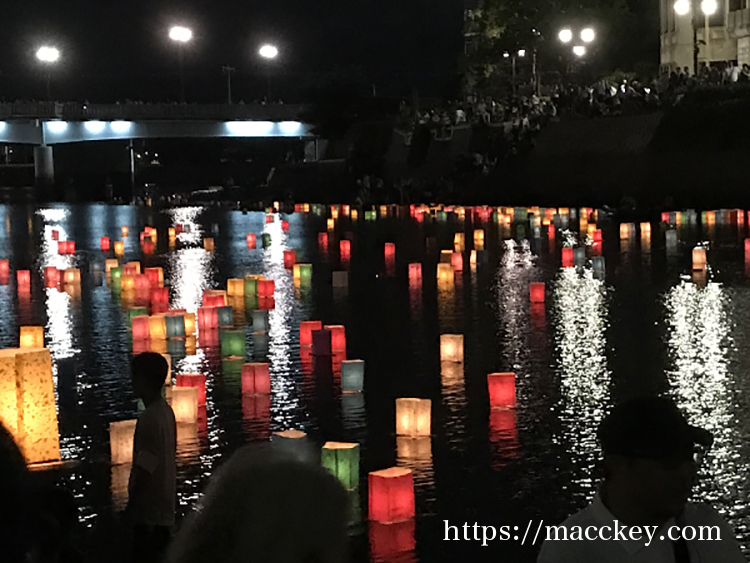
The “Lantern Festival” is now considered a summer tradition in Hiroshima.
To be honest, I never had a chance to go there, but four years ago, in the summer of 2019, a French friend of mine traveled to Japan and we met in Hiroshima on the day of the lantern floating ceremony, so we went together. He and I both bought lanterns, wrote our prayers on them, and floated them away.
I would like to share some of my thoughts on the history and meaning of the lantern floating ceremony in Hiroshima, remembering what we did a little while ago.
(I will also post a video I took at that time in the latter half of this article.)
When and where is the Hiroshima Toro Nagashi?
The Hiroshima Lantern Festival is held every year on the evening of August 6 along the Motoyasugawa River, which runs through the center of Peace Memorial Park.
It takes about 15 minutes from Hiroshima Station by streetcar, get off at “Genbaku Dome-mae” and walk about 5 minutes with Genbaku Dome on your left, near “Motoyasubashi Bridge” over this river.
The festival is also held on the same day at the west end (Koi district) and east end (Fukushima district) of Shin Koi Bridge.
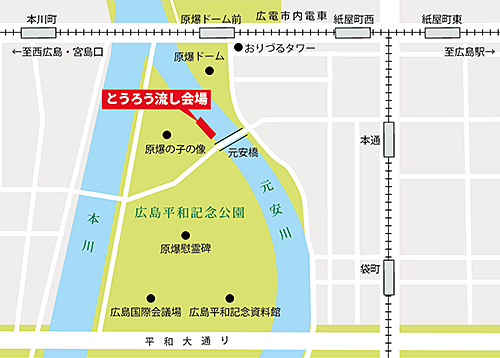
Incidentally, a little south of the Motoyasu Bridge is the Cenotaph for the Atomic Bomb Victims, where the Peace Memorial Ceremony will be held in the morning.
I used to go to the Peace Memorial Ceremony held on the morning of August 6 as I do every year, but to be honest, I had never been to the nighttime Lantern Festival.
It was a good opportunity for me to meet my French boyfriend and say, “Let’s go there then.
The meaning of the Hiroshima lantern floating ceremony. How is it different from the common ones?
It is said that the Lantern Festival is held to mourn the souls of those who have passed away, and that it was originally a variation of the traditional “Okuribi” ceremony, which was held to mourn the souls of the deceased with fire.
Therefore, the “Lantern Floating Ceremony” is not unique to Hiroshima, and it is still held here and there in various parts of Japan.
However, most of them are held in August, during the Bon Festival (the old Bon Festival).
The spirits of ancestors return to Japan during Obon, so it is very Japanese to light lanterns on their return and float them down the river to mourn their loss.
I believe that this is also the basic meaning of the Hiroshima Lantern Festival. The big difference, however, is that Hiroshima was hit by an atomic bomb on August 6, 1945.
At 8:15 in the morning, the city of Hiroshima was destroyed in an instant under the violent flash and impact of the bomb. The city was transformed into a hellscape centered around the area that is now Peace Park.
The Motoyasu River, where the lantern floating ceremony is held, is now a beautiful and peaceful river, but at that time it was a place where many people seeking water entered and died.
Although the Peace Park and Motoyasu River are truly beautiful, I can’t help but imagine the terrible events that took place there.
Of course, I did not actually see it, but when I think of “here” and “so many innocent people”, I have a truly indescribable and complicated feeling, and the words on the cenotaph, “We will not repeat our mistakes”, are very strong in my heart.
I recognize that the Lantern Festival in Hiroshima is held on August 6 to remember those who died in the atomic bombing and to pledge that we will continue our peace, feeling grateful that we are now living in peace.
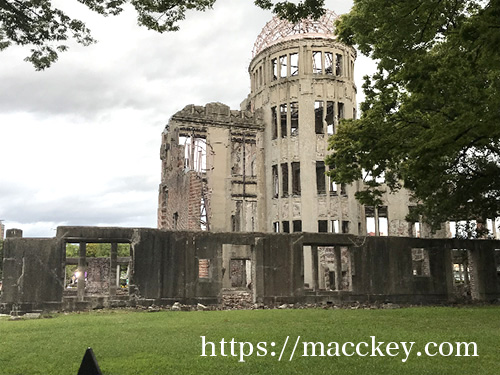
I would like to quote a few words from the text issued by Tochigi City.
It must have been such a tragic and cruel scene that it is hard to imagine from the elegant view of the river, with its colorful lanterns being washed away.
Reference: Tochigi City data, Group D, “About the Experience of Motoyasugawa Lantern Floating.”
On this day, many people were floating lanterns. I was reminded once again of the importance of peace when I realized that each lantern was a memorial to the souls of those who died in the atomic bombing.
The lanterns flowing down Motoyasu River were very beautiful. However, I had a very mixed feeling when I thought that on August 6, 70 years ago, as many people were washed away in this river as the lanterns.
Quote: Tochigi City’s data, Group D, “About the experience of Motoyasugawa Lantern Floating Ceremony.”
I feel that the floating lanterns express our feelings for the many people who died in the atomic bombing, and our wish for peace.
It is really true….
And this is a quote from the “Frequently Asked Questions and Answers” on the official website of Hiroshima City
The “floating lanterns” festival originated soon after the end of World War II, when the families of those who lost their lives in the atomic bombing began to float lanterns by hand.
Reference: I would like to know more about the lantern floating ceremony. (FAQID-3113~3116)
The fantastic lights that drift along the Motoyasu River in the evening not only comfort the spirits of the A-bomb survivors, but also reaffirm the wish for peace of the people living today.
Originally, the Lantern Floating Ceremony in Hiroshima was often done by the bereaved families to comfort their relatives who died in the atomic bombing.
The war between Ukraine and Russia is happening right now, and I really hope that it will end as soon as possible, and I can’t help but pray that such a thing will never happen again under our watch.
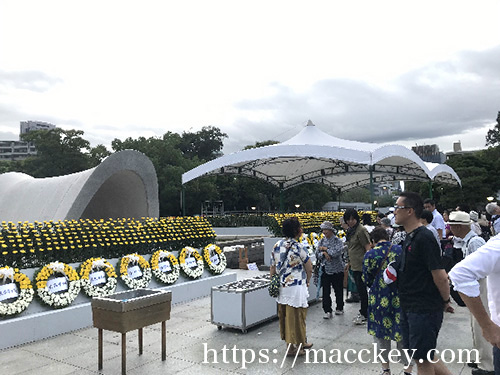
Lantern Festival in Hiroshima today
The Hiroshima Lantern Festival, with such history and significance, is currently managed by the Hiroshima Nakashinren (Federation of Shopping District Promotion Associations in Central Hiroshima / a federation organized by 10 shopping districts and 9 large stores located in the central city district of Hiroshima).
Based on the unique meaning of Hiroshima and the history of August 6, 1945, the festival is also known to citizens as one of the summer traditions of Hiroshima, while praying for peace.
A few personal things…
I am not sure if it is appropriate to write something personal in this vein, but I would like to write a little about myself.
I was born long after the war, but my mother at that time worked at Yokogawa Station in Hiroshima City and was commuting to work normally until the day before.
On August 6, my mother happened to be at home with her parents when she fell ill and miraculously survived.
Many people died both at Yokogawa Station and in the surrounding area. If my mother had gone to work as usual, there is a high possibility that she would have lost her life, and if she had, I would not exist like this.
When I think about it, I cannot separate the atomic bombing and war from what I am now….
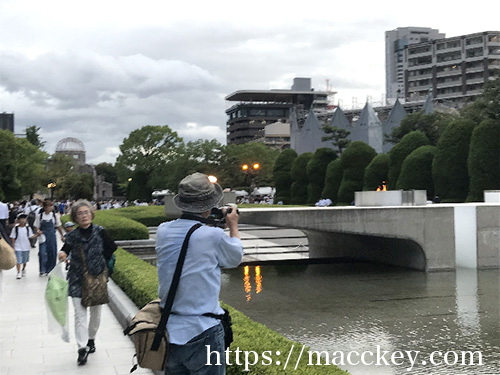
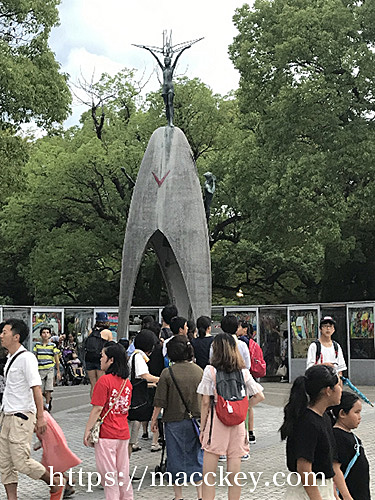
My experience of the Lantern Festival in Hiroshima (August 6, 2019)
As I mentioned at the beginning of this article, I participated in the Lantern Festival with a French friend on that day in 2019. From here I will write about the experience.
Operation, etc.
The Lantern Festival is now officially called “Peace Message and Lantern Floating”.
The organizer of the event is the “Toronagashi Executive Committee,” and it is operated on the basis of the “Chuburinren,” which I mentioned earlier.
Official website of Chuburinren
About the lanterns and participation fees
Lanterns are to be purchased made from recycled paper made by melting down saved Senbazuru (one thousand folded paper cranes) or paper used for Bon lanterns. These are sold in tents set up in the park. 600 yen each.
The hours are from around 6:00 pm to 10:00 pm. However, the person at the reception desk said that it would be closed when all the paper lanterns were gone.
I was not there until that time, but I wonder what time they were done….
Hiroshima at this time of year is still a little light until about 7:30 p.m., so it is more beautiful after 8 p.m. when it gets dark.
Incidentally, this is the scene I saw once when I went there around 6:40 PM.
The lantern floating ceremony has already started, but the atmosphere is not so good because of the bright light.
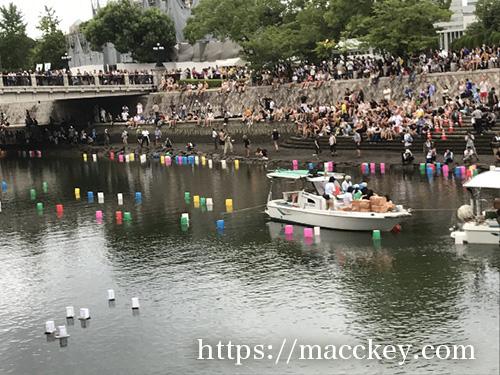
So we left Peace Park and went to a nearby coffee shop to kill some time before returning to the venue around 7:30 pm.
Here is a video taken around 8:30 PM that we played.
The lights around the park are a little dazzling, but it is completely dark and the lantern fire and the surface of the river are very beautiful.
As I mentioned earlier, originally it was often done by the bereaved families to comfort their relatives who died in the atomic bombing, but as time has passed, I feel that more and more people are participating in the event with the desire to pray for world peace or for the end of war, rather than in that sense.
But I think it is also good to pray for peace in the world at large.
I am sure that my French friend also floated lanterns with such a thought in mind.
There are so many people visiting Hiroshima from overseas on this day, and some of these foreigners also floated lanterns with us.
Arrangements for buying and floating the lanterns
For those of you who do not know, I would like to tell you about the arrangements for the actual lantern floating.
On the day of the event, the reception desk is set up in a tent at the site. (When we went there, there was quite a long line, and we had to wait in line for a long time…)
You can buy paper for 600 yen at the reception.
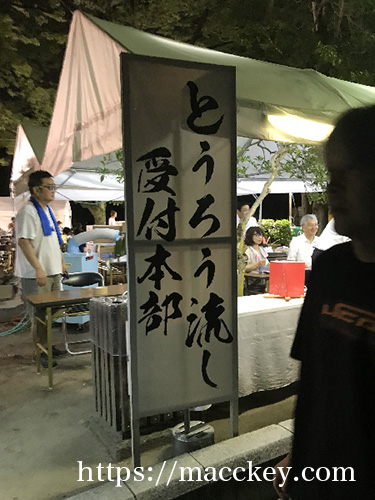
There is a table and a fat sign pen in the space behind the reception desk. You can write your prayers and wishes on the lanterns there.
I was surprised again this time, but there are so many people who do the lantern floating.
There was a long line of people waiting for their turn, and we were at the end of the line.
It took us about 50 minutes to get to the actual place where the lanterns were to be floated.
Until then, all you have in your hand is paper. I wondered where the lanterns would take shape, but when I got down to the riverbed, the person in charge gave me one of the wooden pedestals with sticks standing on the four corners.
You set the paper on it, get a candle there, and light it.
There are several people in charge of this process, and it is very smooth.
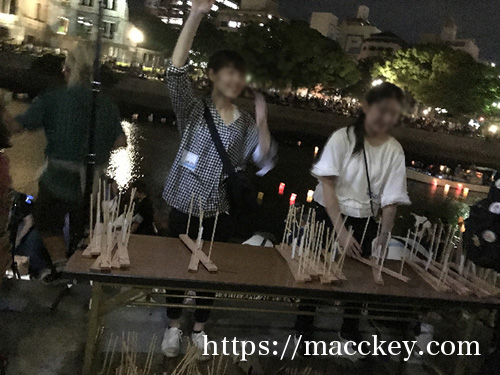
All that is left to do is to float the water, but the river is rocky and dark, and it is very dangerous.
The water level is low, so it is not possible to float by yourself.
Two or three male staff members will go into the river and help you float it, so it’s best to leave it to them. My friend and I did the same.
Follow the floating lanterns with your eyes, pray for a while, and then move on.
- A word of caution to the people who will be flinging the lanterns.
-
First of all, buy your paper early and be prepared for a huge line.
Walk carefully, especially after dark, as the riverbanks are very dangerous and the footing is very poor.
Leave it to the person in charge to float the river.It is fine to pray and follow the floating lanterns with your eyes for a while, but be aware that people will come later and later, and if you don’t move quickly after a certain point, you may become a nuisance.
- Things to keep in mind when watching the festival
-
The view from both banks of the river and from the Motoyasu Bridge is very beautiful, and there are many people watching.
Many people stop to look at the scenery, but there are also people walking normally, so please be careful not to bump into other people.
And although it is beautiful to look at, it is originally an event for memorial services, so please watch it with a sense of prayer rather than a sense of mere sightseeing.
- What happens to the lanterns after they are washed away?
-
Now that the issue of environmental pollution has become an issue of concern, I am sometimes concerned about what happens to the lanterns after they are floated away.
I have checked, and it seems that after the event is over, NPOs and others will send out boats to collect the lanterns. Thank you for your efforts.
I also heard that schools and other organizations can hold lantern floating ceremonies on days other than this one with permission from the relevant department, but in such cases, the school or organization is obliged to collect the lanterns on its own initiative.
For permission application, please contact: “Ministry of Land, Infrastructure, Transport and Tourism, Chugoku Regional Development Bureau, Ota River Office, Koi Branch Office (TEL: 082-271-1418)”
NPO Gankigumi⇒here
Finally
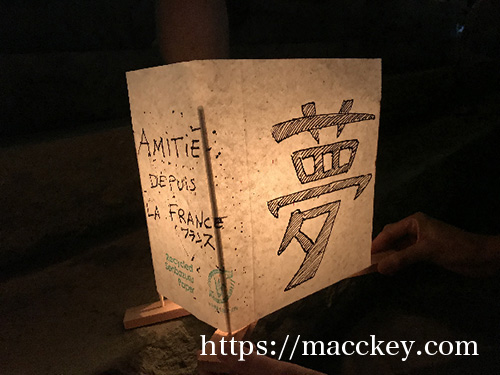
My French friend wrote “Dream” and “amitié depuis la France (Friendship from France)”, and I wrote “May the world be at peace”, although it is a sticky note.
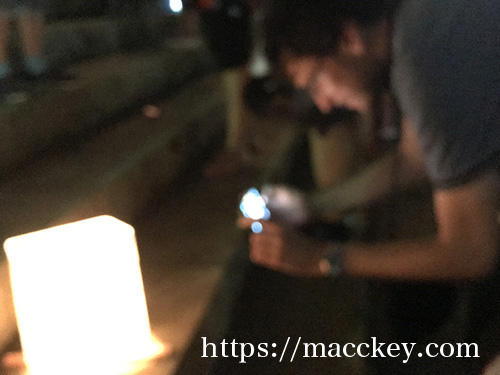
A little boy next to me asked a young mother, “What should I write? and he asked his young mother, who said, “Whatever you think is fine,” and I think that is fine, especially for children.
I hope that through such things, they will feel the need to be with others and to get along with others.
In two weeks this year, the A-bomb memorial and Lantern Festival will come.
Peace Park is a place where something sad happened 78 years ago, but now it is also a place where we can feel the preciousness of peace and the joy of getting along with people around the world.
We hope you will come and visit the park.
Here is a list of articles related to Hiroshima on this blog. You can jump to each article from here, including sightseeing spots in Hiroshima, if you like.
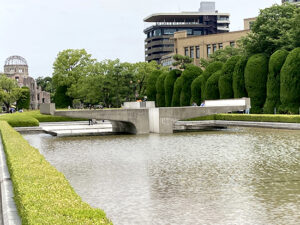
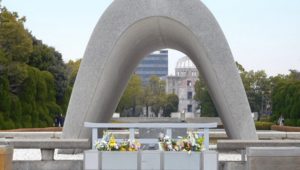
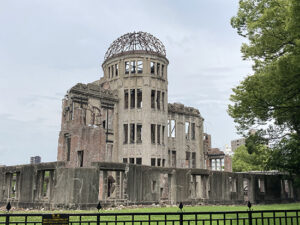

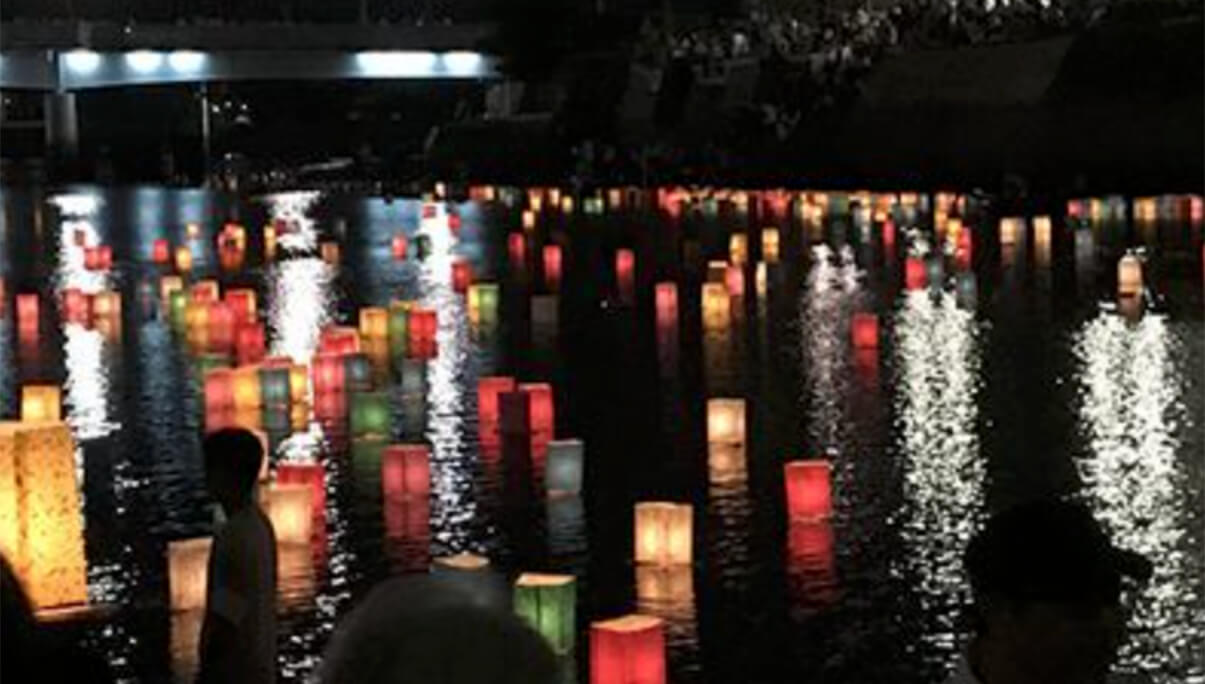
Comments